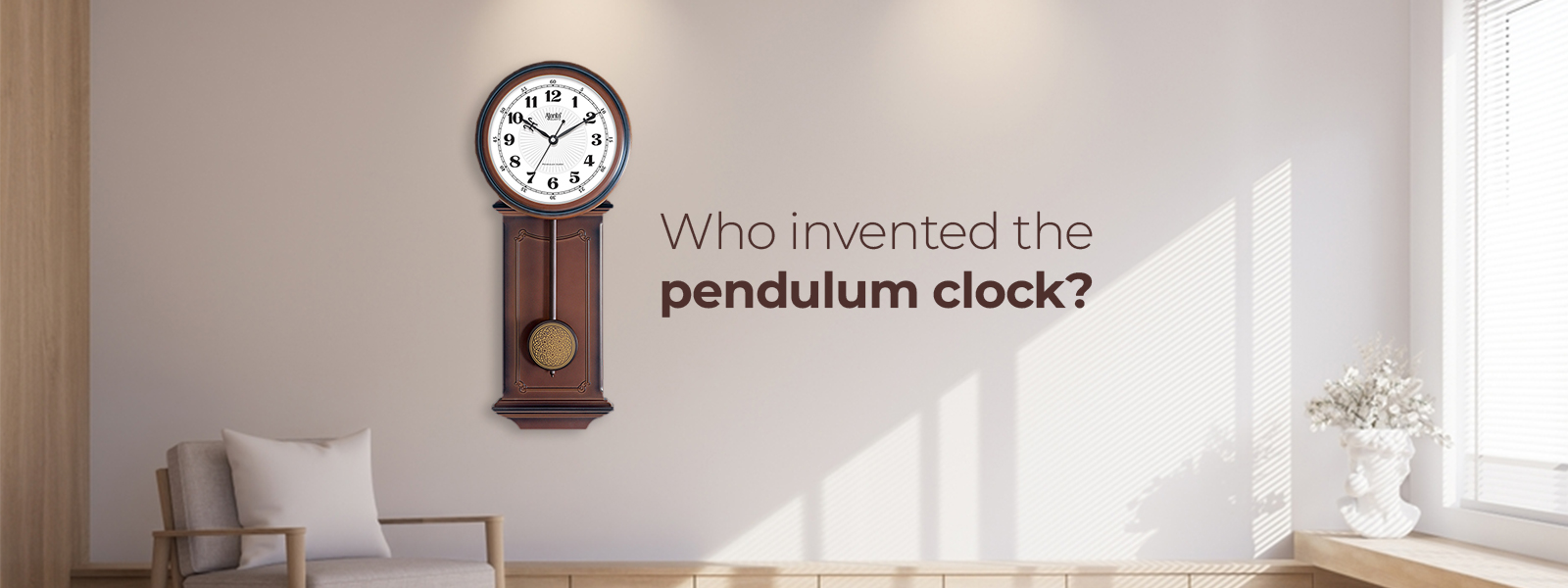
The pendulum clock was one of the greatest timekeeping innovations ever, which also showed time accurately, even before digital and atomic clocks came into being. Suppose you are wondering who invented the pendulum clock that tells time so accurately. In that case, it’s Christiaan Huygens, a Dutch inventor and scientist, who developed the first successful pendulum clock in 1656. His innovation transformed the way humans were able to measure time accurately, which had an impact on everything from navigation to daily routine.
The Pendulum Clock Inventor: Christiaan Huygens
Christiaan Huygens (1629–1695) was an exceptional physicist, astronomer, and mathematician. Clockmaking in the mid-17th century had one big issue—accuracy. The mechanical clocks of those days would drift by minutes per day. Huygens, following Galileo’s previous research on modern wall pendulum clock motion, understood that a pendulum’s consistent swing could be a perfect regulator for a clock mechanism.
In 1656, he constructed the first functional pendulum clock. His invention cut daily time deviations from about 15 minutes to below a minute, a revolutionary advance.
How the Pendulum Clock Works?
A pendulum clock utilizes a swinging weight (the pendulum) to regulate the turning of gears within the clock. Every swing of the pendulum takes an equal period of time, varying with the length of its travel. This structured, synchronous rhythm drives the hands of the clock to move in a precise manner to depict the exact hour, minute, and second.
Huygens’ design used a weight-driven mechanism, where the pendulum served as a natural timekeeper. This principle formed the basis of centuries of clockmaking, many of which are classic and modern wall pendulum clock designs we have today.
The Evolution of the Pendulum Clock
With the successful innovation of the pendulum clock, its use spread rapidly across Europe. Several craftsmen started crafting elaborate, exquisite designs of wooden and metal clock cases, making a pendulum clock a design element at home. Then came the 18th and 19th centuries, where some advancements were made, giving us pendulum clocks that performed with better precision and accuracy. With time, smaller spring-powered pendulum clocks gained popularity for use at home.
Pendulum Clocks in the Modern Era
Though electronic and quartz clocks are the standard for timekeeping these days, pendulum clocks are still a sign of craftsmanship and sophistication. Even many homes boast contemporary wall pendulum clocks as statement pieces. Orpat offers a variety of designs that blend accuracy, modern technology and classic beauty of swinging pendulums making them a dependable piece of functionality and decor. Today’s modern wall pendulum clock comes in styles from minimal glass to classic wooden finishes and can fit into any interior. While their function as the most accurate timekeeper has been usurped, their beauty and mechanical appeal cannot be beat.
Why the Pendulum Clock Was Revolutionary
A clock was not dependable for accuracy and precision before Huygens’ invention, making things like celestial navigation quite challenging. Precise time and accuracy is extremely important for mariners to calculate longitude when at sea. The pendulum clock provides precision and accuracy that was required for navigation, science, and life itself. This also facilitated standardising time, enabling more coordinated work timetables, public events, and transportation schedules concepts now at the core of modern society.
Modern Wall Pendulum Clock – A Harmonious Blend of Tradition and Technology
Having a modern wall pendulum clock is not just about possessing a means of telling time it’s about being part of a tradition going on for centuries. At Orpat, we manufacture pendulum clocks that retain the aesthetic charm of swinging motion while integrating long-lasting, accurate movements. Our pendulum clocks are not only functional but also decorative pieces that add to home and office décor.
No matter if you opt for a streamlined, modern look or a traditionally styled wooden case, the pendulum brings a dynamic, soothing touch to your area.
The Lasting Legacy of the Pendulum Clock
The invention of the pendulum clock was a milestone history of wall clocks. It was the epitome of precision timekeeping for more than 250 years, serving to advance science, navigation, and even everyday life. Nowadays, during the smartphone and atomic era, the pendulum clock remains aloft—praised for its looks, engineering, and elegance of motion.
From Huygens’ 17th-century breakthrough to modern wall pendulum clock configurations today, the pendulum is a continually enduring testament to human ingenuity and our need to measure well and accurately.
Frequently Asked Questions
Pendulum clock was discovered by Christiaan Huygens, a Dutch researcher, in 1656. His invention considerably enhanced the accuracy of timekeeping over previous mechanical clocks.
It utilizes a swinging pendulum to control the turning of the gears within the clock. The repetitive swing allows for precise movement of the clock hands.
Mechanical pendulum clocks are very precise but are generally less precise than quartz clocks available today. Most present-day wall pendulum clocks, however, incorporate quartz movements for the best timekeeping with the pendulum’s sophistication.
Yes. Orpat provides a great variety of modern wall pendulum clock merging traditional swinging appearances with modern styles.
Pendulum clocks provide timelessness of appearance, mechanical intrigue, and decorative appeal. They are functional clocks and fashion statements.


